5 reasons to expect the Australian Dollar to rise (and what investors can do about it)
They also impact the cost of travelling overseas and import prices. But currency movements are also very hard to get right. Over the last few years, the $A has been soft. This note takes a look at the outlook for the $A.
Why has the Australian Dollar been so soft?
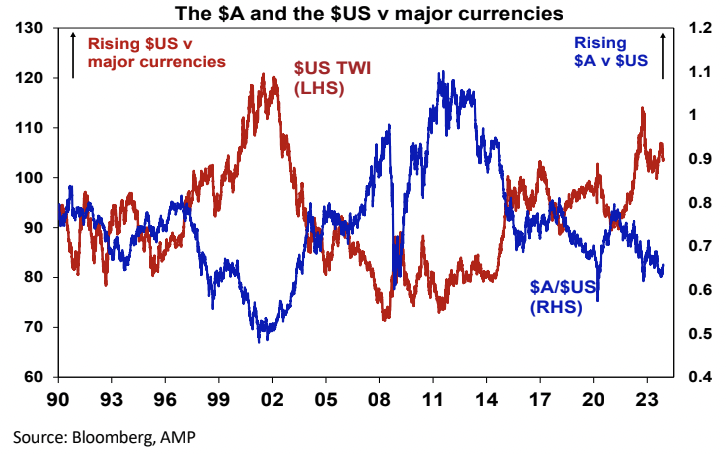
- The initial slow reopening of the Australian economy from the pandemic relative to the US and Europe.
- Worries about a hit to global growth from the inflation surge and higher interest as the Australian Dollar tends to be sensitive to global growth given Australia’s high proportion of commodity exports.
- This has been accentuated by worries about China with lockdowns last year, a patchy recovery this year and property sector worries.
- A downtrend in commodity prices after an initial boost mainly to energy prices from the Ukraine war.
- Relative strength in the US Dollar generally (see the first chart above) as it tends to benefit in times of global uncertainty.
- Less rate hikes from the RBA, compared to the US Federal Reserve which has reduced the incentive for investors to park their cash in Australia. As evident in the next chart, the Australian Dollar tends to fall when the gap between the RBA’s cash rate and the Fed Funds rate narrows (highlighted with arrows) over the last two years and vice versa.
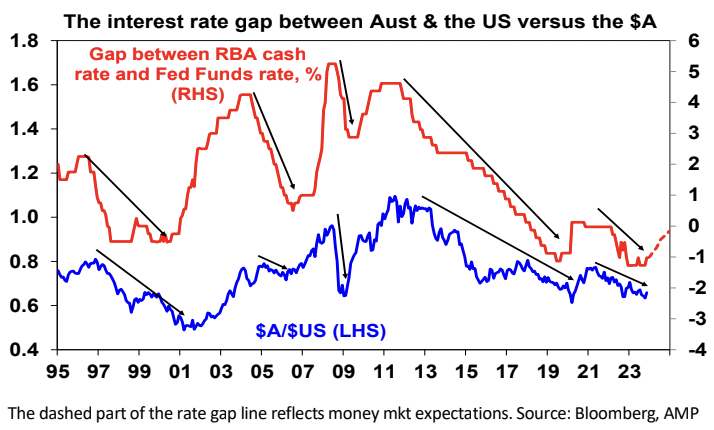
But there are five reasons to expect the Australian Dollar to rise
Firstly, from a long-term perspective, the Australian Dollar is somewhat cheap. The best guide to this is what is called purchasing power parity (PPP) according to which exchange rates should equilibrate the price of a basket of goods and services across countries – see the next chart.
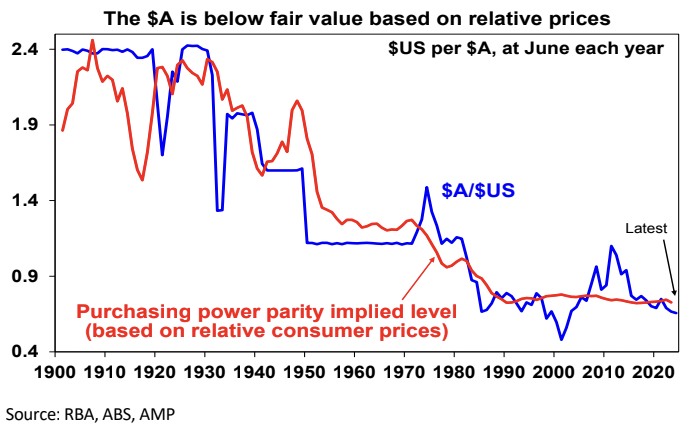
And vice versa, if Australian inflation falls relative to the US. Consistent with this the Australian Dollar tends to move in line with relative price differentials – or its purchasing power parity implied level – over the long term.
Over the last 25 years, it has swung from being very cheap (with Australia being seen as an old economy in the tech boom) to being very expensive into the early 2010s with the commodity boom. Right now, it’s back to being modestly cheap again.
Second, relative interest rates are starting to swing in Australia’s favour with increasing signs that the Fed is at the top whereas there is still a high risk that the RBA will hike rates further.
Money market expectations show a narrowing gap between the RBA’s cash rate and the Fed Funds rate – see the relative interest rate chart above. More broadly the US Dollar is expected to fall further as US interest rates top out.
Third, global sentiment towards the $A is somewhat negative and this is reflected in short or underweight positions. In other words, many of those who want to sell the Australian Dollar may have already done so and this leaves it vulnerable to a further rally if there is any good news.
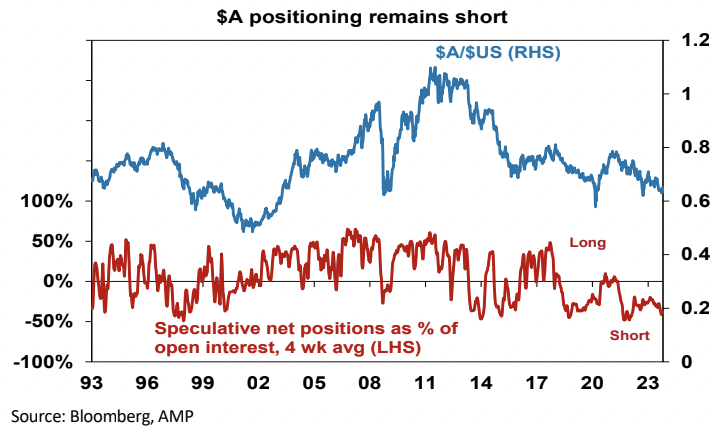
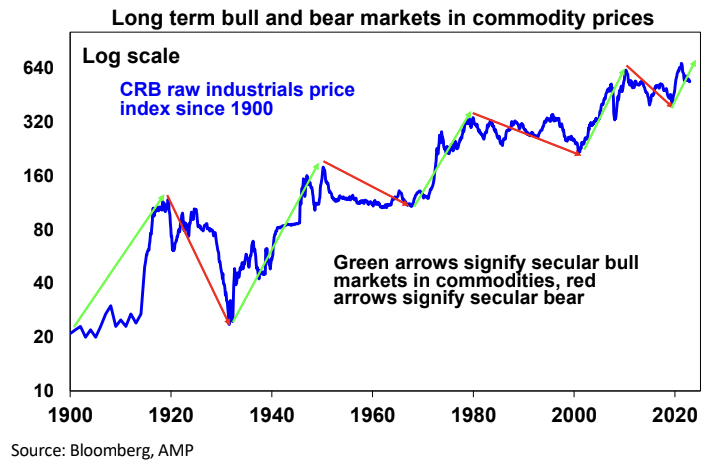
The swing into a current account surplus means Australia is a capital exporter and that there is more natural transactional demand for the Australian Dollar than supply.
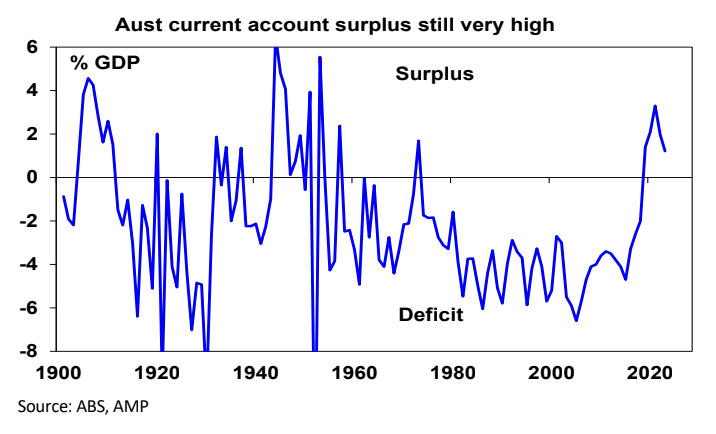
Where to from here and what is the main risk?
The main risk is if the global and/or Australian economies slide into recession next year – this is not our base case but it’s a very high risk and if it occurs it could result in a new leg down in the Australian Dollar as it is a growth sensitive currency and a rebound in the relatively defensive US Dollar.
What would a further rise in the Australian Dollar mean for investors?
So, when investing in international assets, an Australian investor has the choice of being hedged (which removes this currency impact) or unhedged (which leaves the investor exposed to Australian Dollar changes).
Given our expectation for the Australian Dollar to rise further into next year, there is a case for investors to tilt towards a more hedged exposure of their international investments.
First, currency forecasting is hard to get right. And with recession risks remaining high, the rebound in the Australian Dollar could turn out to be short-lived.
Major falls in global shares which are circled in the next chart saw sharp falls in the Australian Dollar which offset the fall in global shares for Australian investors. Having exposure to foreign exchange provides good protection against threats to the global outlook.
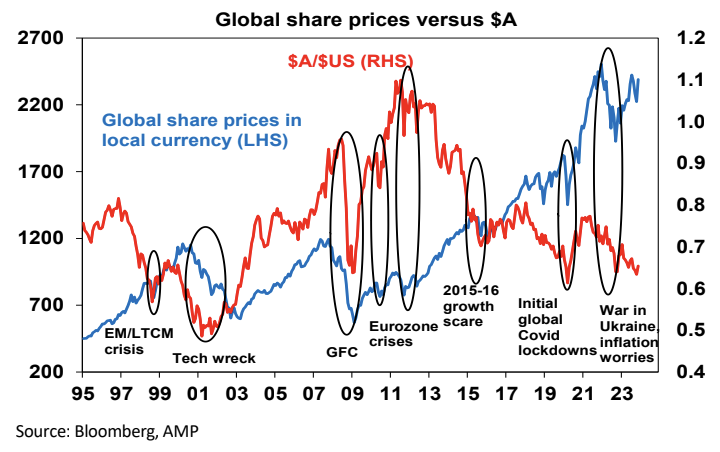
2 topics

